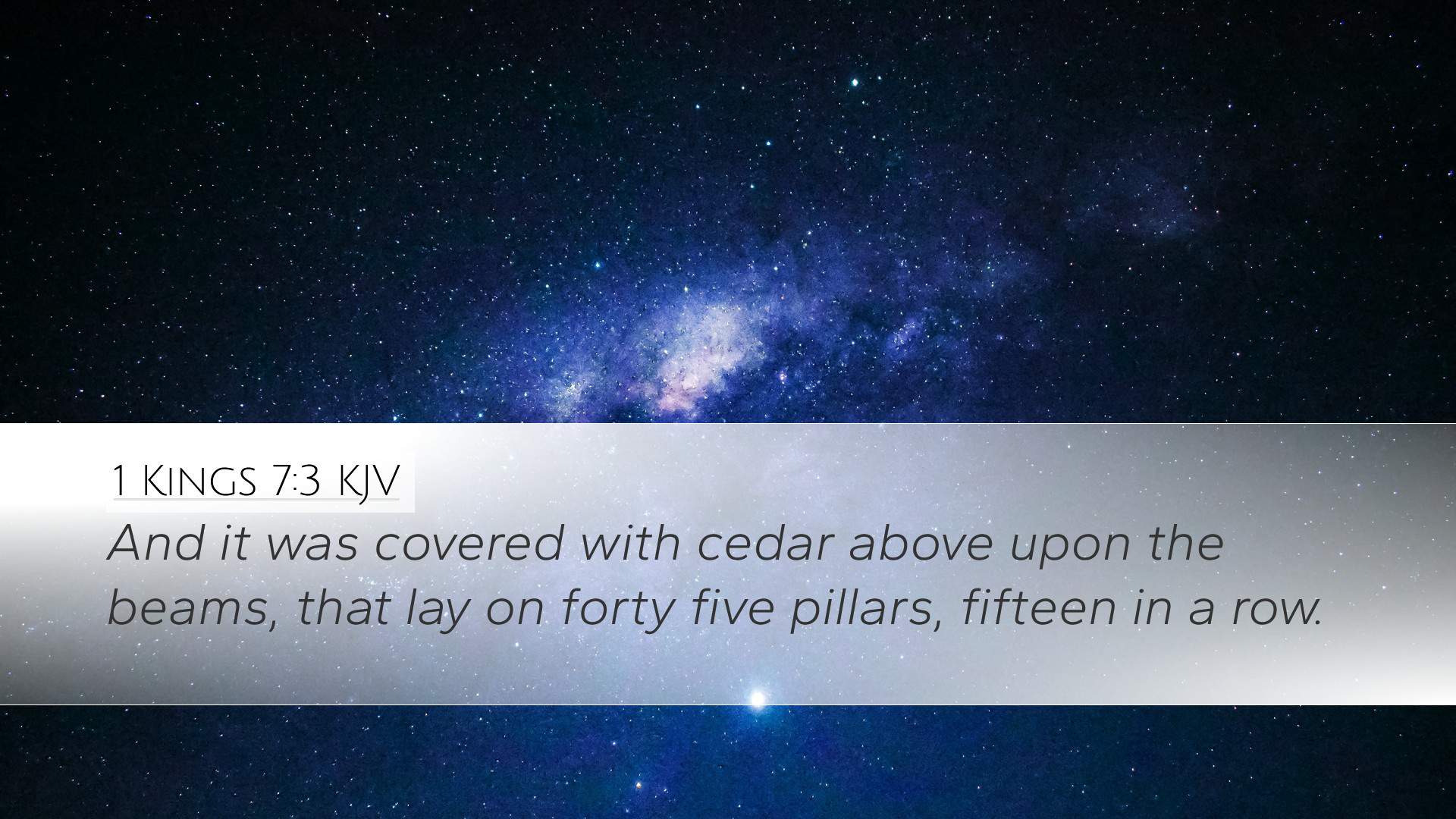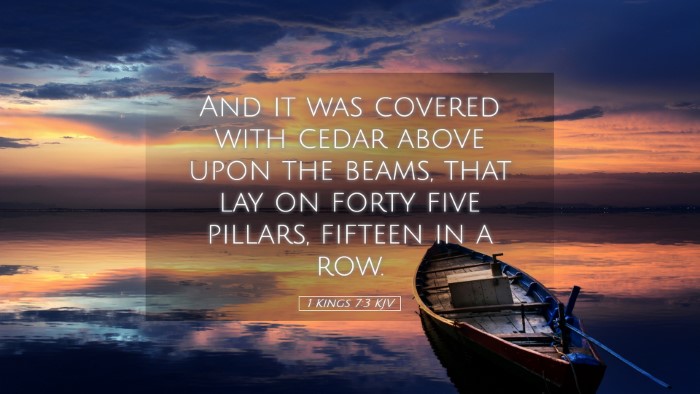Commentary on 1 Kings 7:3
1 Kings 7:3: "And it was covered with cedar above the beams that lay on forty-five pillars, fifteen in a row."
Context and Structure
The passage from 1 Kings 7:3 is situated within the larger narrative detailing the construction of the Temple by King Solomon. This text emphasizes the opulence and architectural grandiosity of the Temple, reflecting not only the wealth of Solomon but also his devotion to YHWH.
Interpretative Insights
General Observations
The architecture described bears significance not only for its physical attributes but also for its theological implications. The "forty-five pillars" symbolize strength and stability. The meticulous craftsmanship indicates the seriousness of the endeavor—constructing a dwelling place for God.
Matthew Henry's Commentary
According to Matthew Henry, the use of cedarwood denotes both durability and beauty, appropriately fitting for an edifice dedicated to divine worship. The pillars, arranged in rows, provide a structure reminiscent of divine order. Henry also notes that the number of pillars (forty-five) suggests a completion of God’s purposes. The roof being covered with cedar indicates an intention to create a sacred atmosphere, shielded from the elements, which reflects God's protection over His people.
Albert Barnes' Perspective
Albert Barnes elaborates on the significance of the pillars in ancient architecture, emphasizing that their physical presence supports the structure both literally and metaphorically. He interprets the "fifteen in a row" as a strategic design, showcasing Solomon's ingenuity. Barnes suggests that such attention to detail is critical in making the Temple a "house of prayer," illustrating how the physical space correlates with spiritual intentions.
Adam Clarke's Analysis
Adam Clarke brings forth a theological interpretation of the materials used. He argues that cedar symbolizes holiness and incorruption, which were fitting for a structure meant to house the presence of God. Clarke also comments on the artistry involved in the construction, asserting that such efforts would cultivate an atmosphere conducive to worship and reverence among the people of Israel. The intricate details serve as a reminder of the glory and majesty of God, pointing towards the ultimate purpose of the Temple as a place for divine communion.
Theological Reflections
The construction of the Temple can be seen as a pivotal moment in the history of Israel, wherein the community collectively participated in the creation of a sacred space. This resonates with the theological themes of God inhabiting and blessing spaces set apart for Him. The choice of materials and architectural design lends itself to meditations on God’s holiness and the importance of beauty in worship.
Symbolism of the Pillars
- Strength: The pillars signify God’s strength supporting the church.
- Stability: Reflecting the steadfastness of God's promises to His people.
- Unity: The arrangement in rows may symbolize the unified body of believers in faith.
Lessons for Contemporary Worship
Modern worship spaces are often designed with intentionality, much like the Temple. Pastors and church leaders should take into account the significance of physical space in facilitating worship experiences. Moreover, the reverence for materials and design reflects a theology that values God’s presence among His people.
Conclusion
In summary, 1 Kings 7:3 encapsulates significant insights regarding worship, architectural symbolism, and God's relationship with His creation. By drawing from the wisdom of historical theologians like Henry, Barnes, and Clarke, contemporary viewers of this text are invited to reflect on both the historical implications for Israel and the ongoing significance for our worship practices today.


